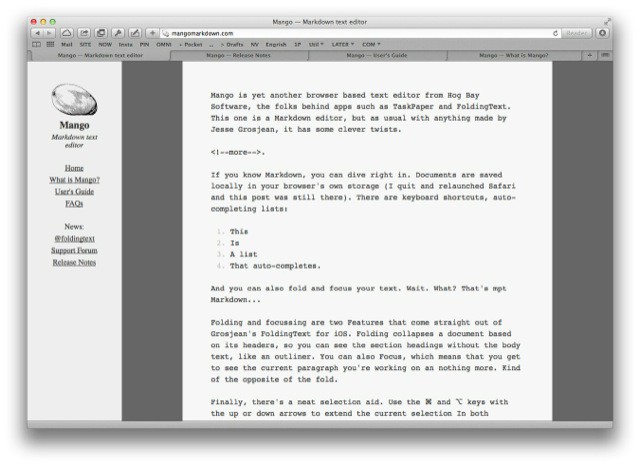

I still use it very frequently, because I have lots of data stored in there, but I started looking for alternatives. They have recently released their macOS/Linux/Window apps in the form of web-wrapper again, Electron-based apps which I am not a fan of. On the missing list of features, Workflowy does not handle dates at all, it offers no integration options, no API, and I wish it were supporting Markdown after all these years, at least in notes, but no. After a while, I found myself not using the iOS app anymore, only very infrequently for reading or reviewing. That is because the app is essentially a wrapper around the website, so non-default text editing experience and overall sluggish web wrapper UI do not help with the UX. Although Workflowy has an iOS app available on App Store, the UX is just not right.

To name a few shortcomings of Workflowy, I can start by highlighting the lack of a native app on iOS and/or macOS. Only recently, the team is starting to hire an engineer to “maybe” start the development again. It is not like that Workflowy at its current state is not being useful anymore however, you start to see how the availability of particular features can improve your “workflow”, but unfortunately they’ll never be developed in the case of Workflowy. The near-zero development speed and several delays in releasing some very old Requested Features has started to become frustrating. Although I am pretty happy with the outlining, I am not very satisfied with the Workflowy as a service. Over time, the outlining proved to be an effective method for collecting, organizing and pursuing my thought. It seems it is working for others with other needs too. I am also surprised by the number of reads and recommends on Medium. It is maybe because I designed it for my needs, and it turned out to be flexible enough to adjust over time. I never thought that I continue using it for such a long time. 'Close' the link again by adding the parenthesis.It has been a while that I am using Workflowy Journal as my main productivity method, and therefore Workflowy as my primary productivity app/service. You can 'break' the link by deleting the parenthesis at the end and then edit the URL. URLs tend to get very long in Markdown links like (.), now they will be hidden and replaced with a link symbol. So the headings stay folded after re-opening the note and the state will also be synced. The folding state is preserved by saving a " …" at the end of the heading into the plain text file. If you paste it outside NotePlan, it will expand the folded text. The folded contents will be copied as well. You can also copy and paste a folded heading. NotePlan will hide the text and show an ellipsis button which you can click to expand the text again. On iOS, a new arrow button was added to the toolbar above the keyboard.
Foldingtext ios mac#
Hide the text below a heading on Mac by hovering over the heading and clicking on the arrow button left of it or use the CMD+/ shortcut anywhere in the text you want to hide. In this video I'm explaining the new features (6 min): But the longer the URL part, the more cluttered your day looked like - not anymore with v3.0.18 (Mac and iOS).

When you have long notes you can remove a lot of distractions now by folding the headings and focus on the paragraph you need to write now.Īlso new: Markdown URLs will be hidden and replaced with a link symbol, so the clutter in your text is reduced.įor example, you paste links to blogs or websites from your browser into NotePlan to read them later? NotePlan automatically creates a markdown link. Folding text is one of the most requested features, and it was not easy to build, to be honest! But I got it done, and it's here.


 0 kommentar(er)
0 kommentar(er)
